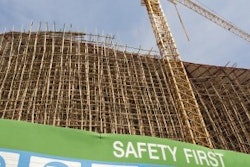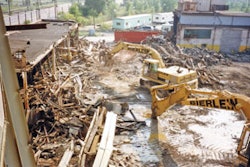
Meeting the minimum OSHA requirements is not enough to prevent on-site construction accidents, and even the most alert site manager cannot be expected to monitor every action of his workers. Put your plan in writing and make it a routine part of every project - not doing so can result in serious legal ramifications down the line.
The why and how of writing a safety plan
Advanced planning and proper documentation provides legal protection and also prevents the accidents from happening in the first place.
Safety plans are often times made as templates that can be modified or filled out by workers on a site by site basis; some areas are left blank so names and other unique variables can be included. The following areas should be included in the safety plan you have for each project:
New hire orientations and worker training
Make sure every contractor and worker who enters your jobsite receives a physical copy of your written safety plan. If you anticipate there will be workers whose first language isn’t English, have someone draft a copy of the plan in another language as well. Having your workers fully comprehend your written plan doesn’t just save you from legal issues but protects your workers lives as well.
Having a written program in place can prevent drug and alcohol use on the jobsite as well. Have your workers sign a document that says they won’t be under the influence while on the job. You can also hire a safety consultant to provide seminars and videos. Quiz workers on proper procedures and require they sign off and confirm they have received safety training.
Initial site inspection and routine audits
Construction safety begins with recognizing and taking steps to properly deal with safety hazards unique to each job site. Writing these hazards down is extremely important with remodeling projects and when any form of demolition proceeds construction. If an accident occurs and there is no written record of an initial site inspection, there are going to be serious legal problems for your company. Consider all equipment that will be entering the jobsite. Escape/evacuation routes should be determined before workers enter the area. Establish days that you will perform safety audits of the site as the project progresses.
Fire, fall and electrical hazards
A written plan should include inspections of all electrical equipment. Specify the training needed for all workers in the general area of high-tension wires, underground cables and electrical boxes. Additionally your plan should include a statement regarding PPE, or personal protection equipment. Write down where the equipment can be found and who is in charge of distributing the equipment. All workers on the jobsite need to be mindful of safety when anyone is working at an elevated position. Falling tools are lethal at a short distance. Scaffolding and guard rails should be inspected regularly and records of inspection should be kept on file.
Electrical Hazards on Construction Sites
Video: Construction Electrical Safety
Jason Kane is a former construction foreman and avid construction blogger. Jason writes about on-site hazards and construction safety equipment provided by companies like http://www.FallProtectionUSA.com



















